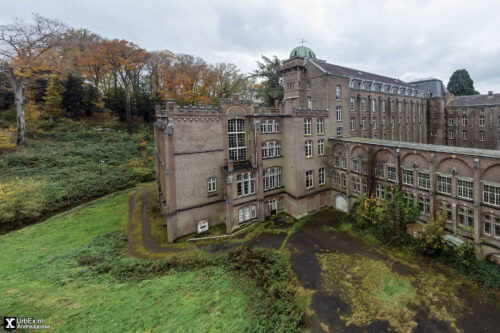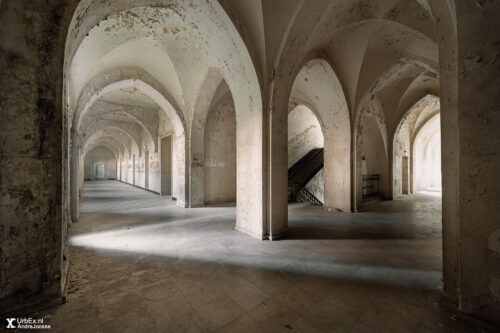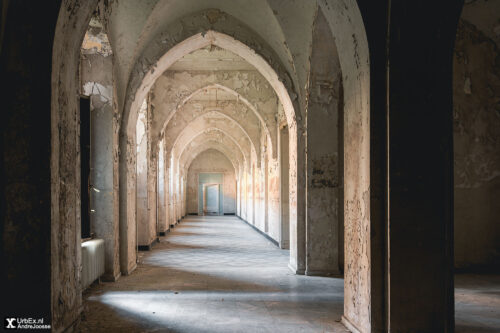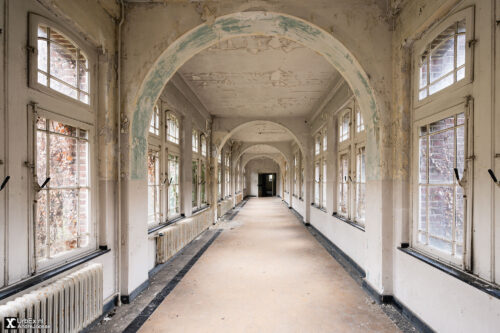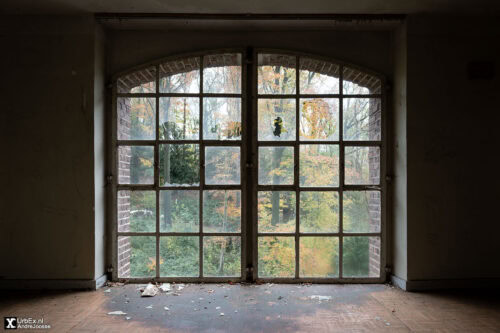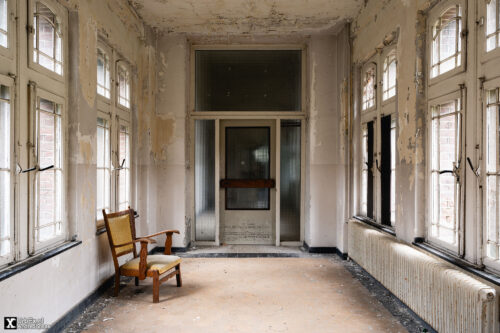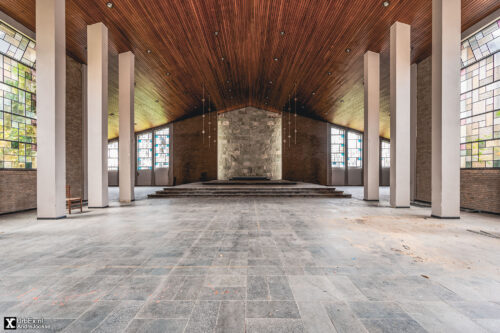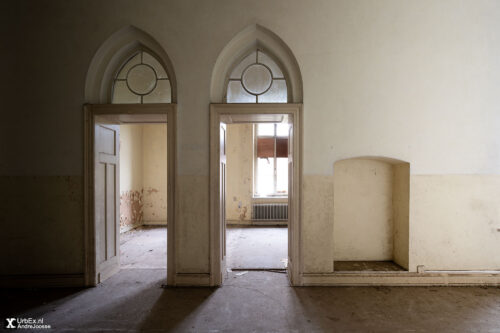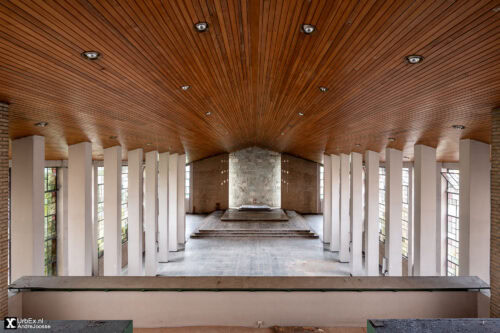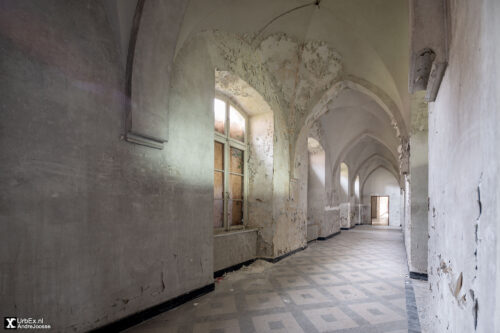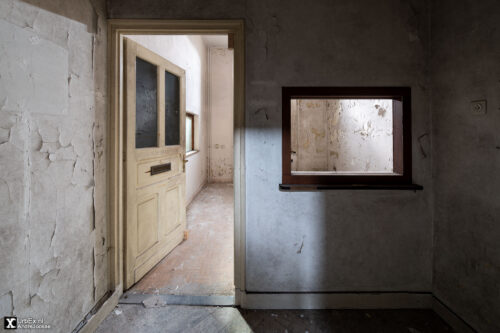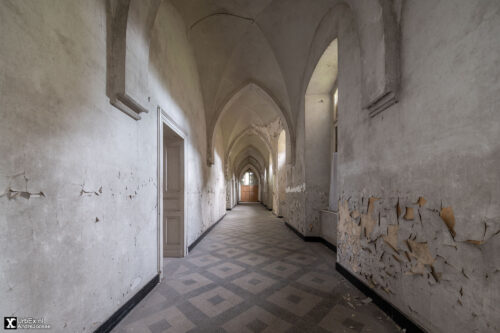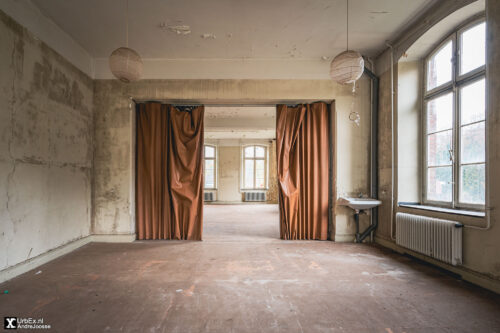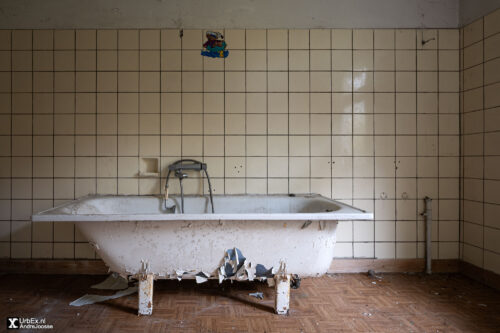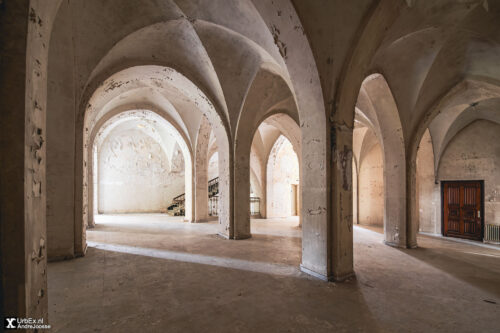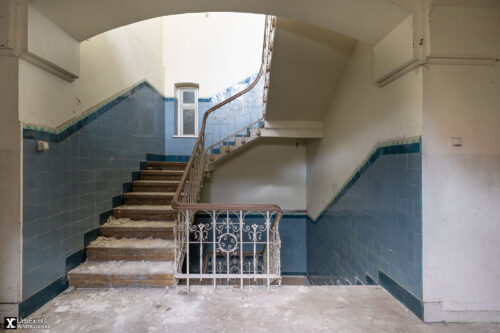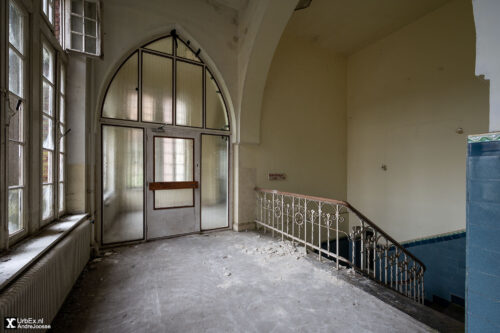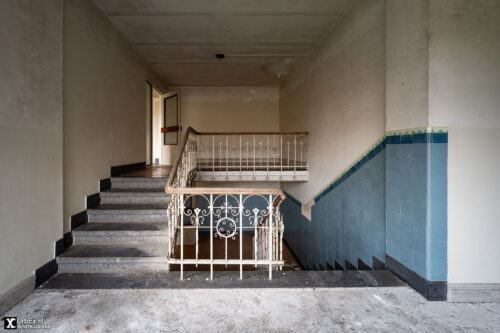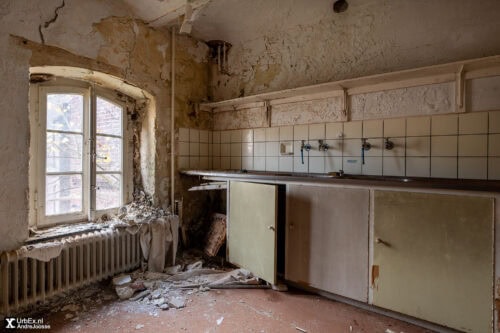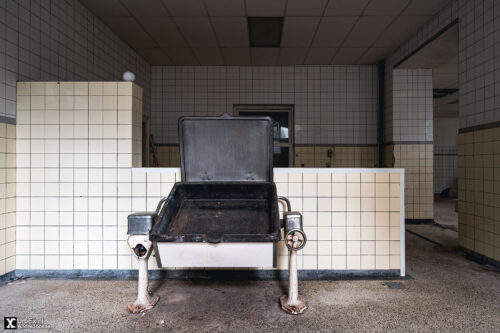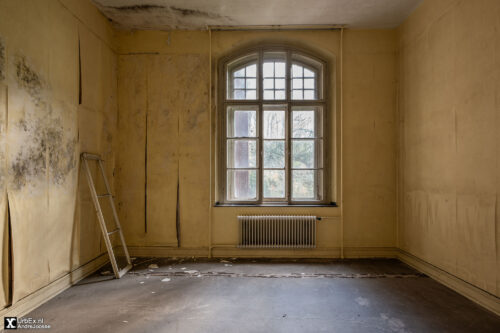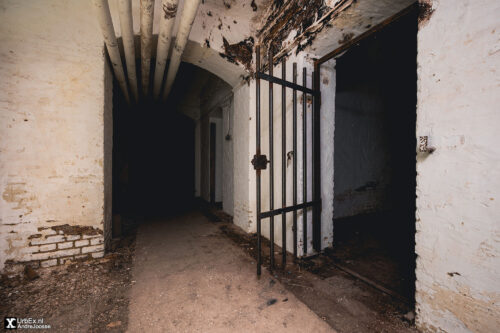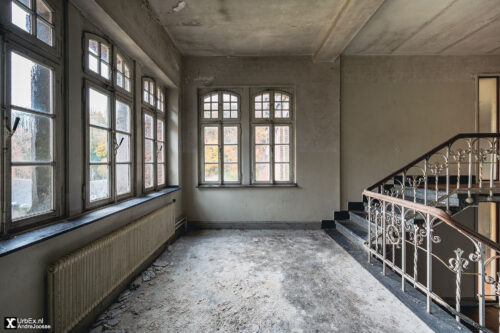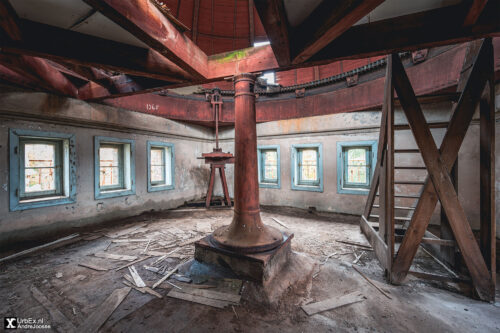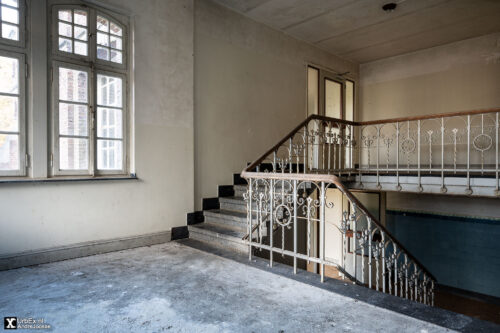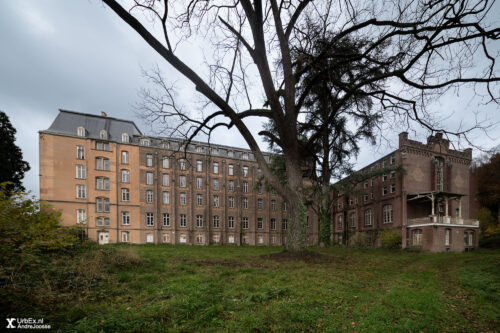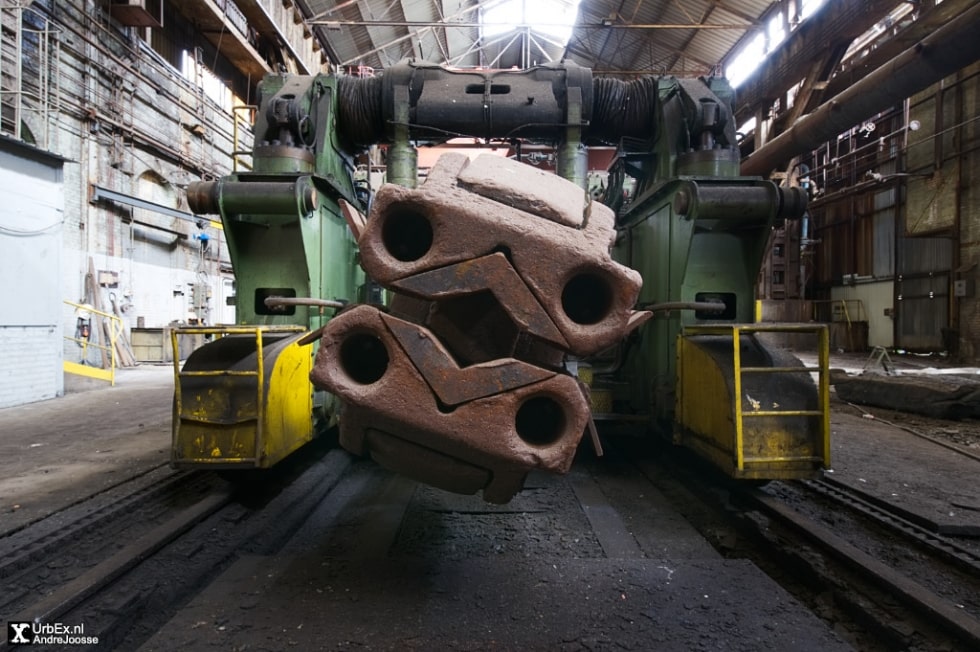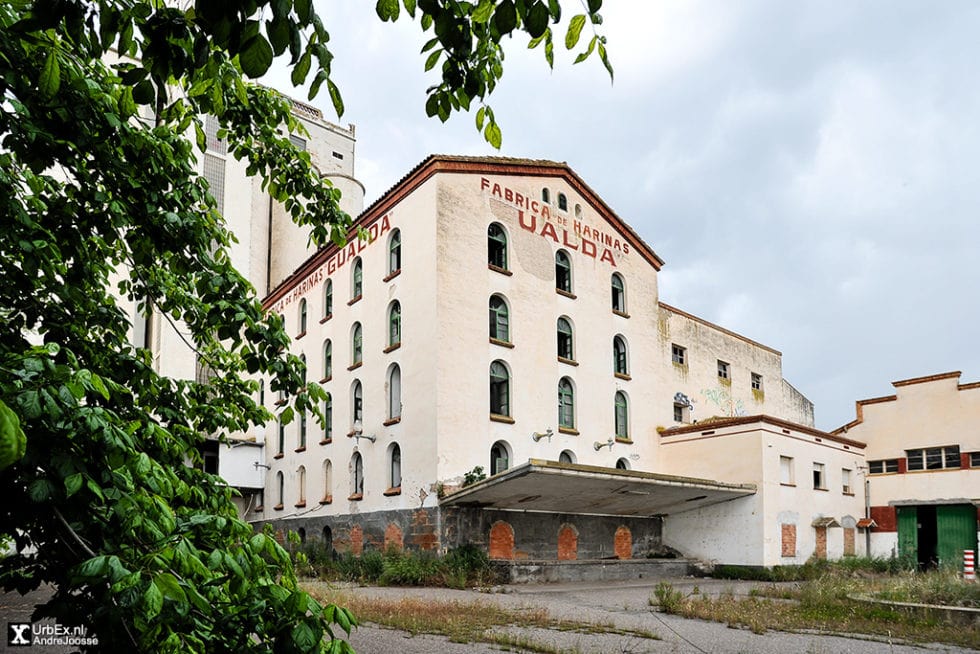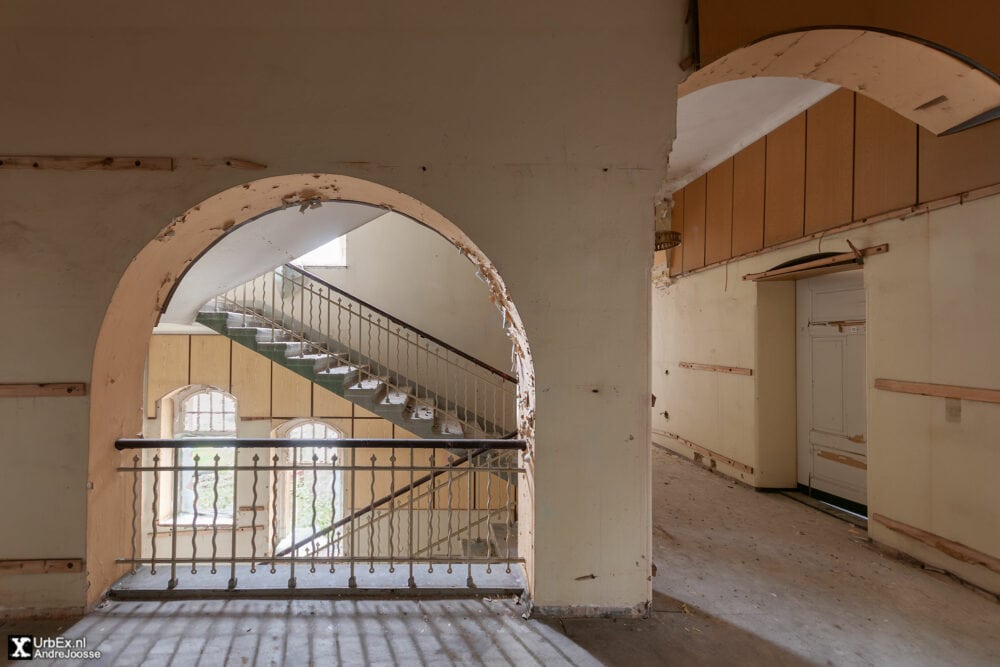Jezuïetenklooster
Uncover the hidden history of the Jezuïetenklooster, an abandoned Dutch monastery. Built in the late 19th century, this once grand structure has seen a turbulent past, from serving as a college for German Jesuits to becoming a site of wartime destruction and neglect.
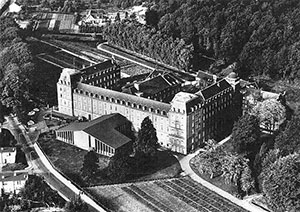
This monastery was built between 1893 and 1895. The Society of Jesus, also known as the Jesuits, constructed it after being expelled from Germany during the Kulturkampf. The architect was H.J. Hürth. The monastery became home to the Ignatius College for German Jesuits.
Expansion and War
In 1911, a new wing and a library were added. The complex formed an E-shape with a central neo-Gothic chapel and a tower. The Jesuits collected many valuable books and published commentaries on the Holy Scriptures.
During World War II, the Gestapo expelled the Jesuits again. In 1943, the occupying forces destroyed the chapel. The building then housed a National Socialist Reich School. Thankfully, the most valuable books were saved. After the war, the Jesuits found the rest of the library mostly intact. In 1959, the books were moved to the Jesuit Theological College in Frankfurt am Main.
Post-War Period
From 1948 to 1961, the building was empty. Then, the German congregation of the Sisters of St. Joseph bought it. The sisters had moved to the Netherlands in 1877, first to Beek, and later to Valkenburg. In 1961, they left their convent in Valkenburg for the former Jesuit monastery, which became the Dutch provincialate and a retirement home called ‘Huize Boslust’. Between 1962 and 1964, a new chapel was built with funds from German war reparations.
Recent History
In 1984, new homes for the remaining sisters were built in the monastery’s garden. The sisters moved into these homes in 1985, naming the new complex St. Joseph Convent. As a result, the old Jesuit monastery was left empty. At the end of the 20th century, the building was eventually sold to the Stichting Transcendente Meditatie Nederland. Unfortunately, the building was neglected and fell into disrepair.
This abandoned monastery is a remarkable place with a deep history. From its construction in the late 19th century to its current state, it has seen many changes. Exploring this site offers a unique glimpse into the past. I visited the Jezuïetenklooster in 2020.
